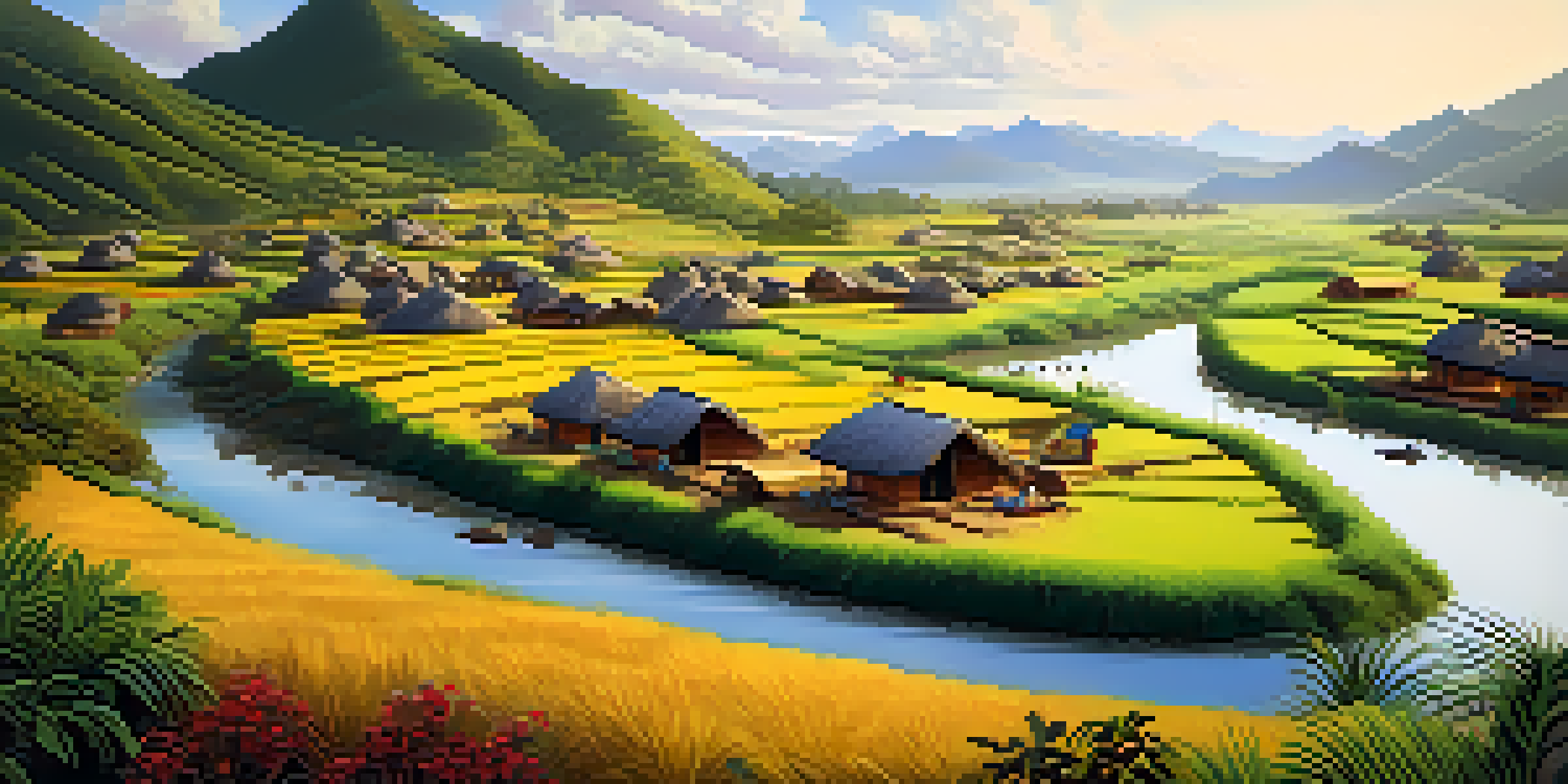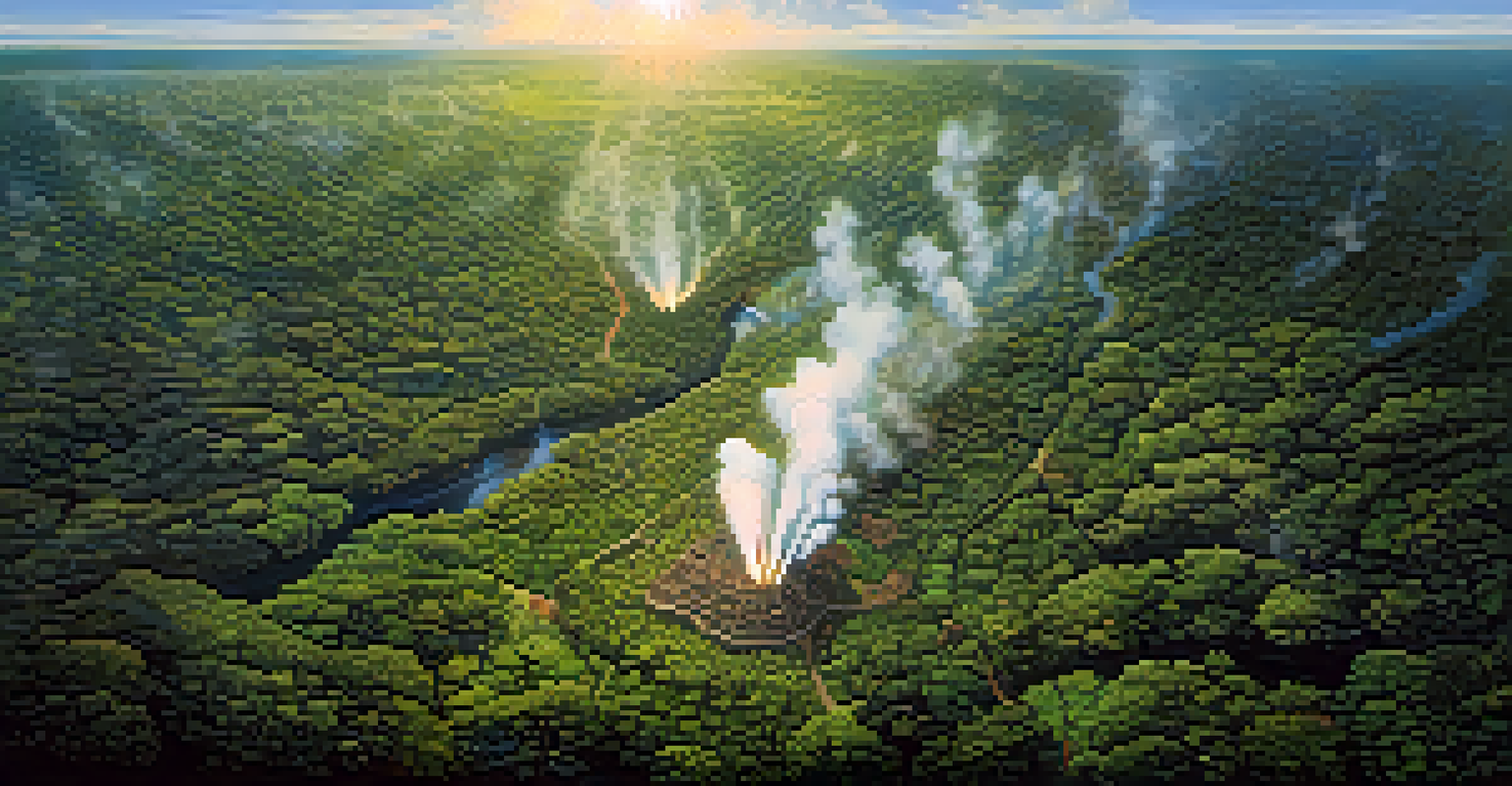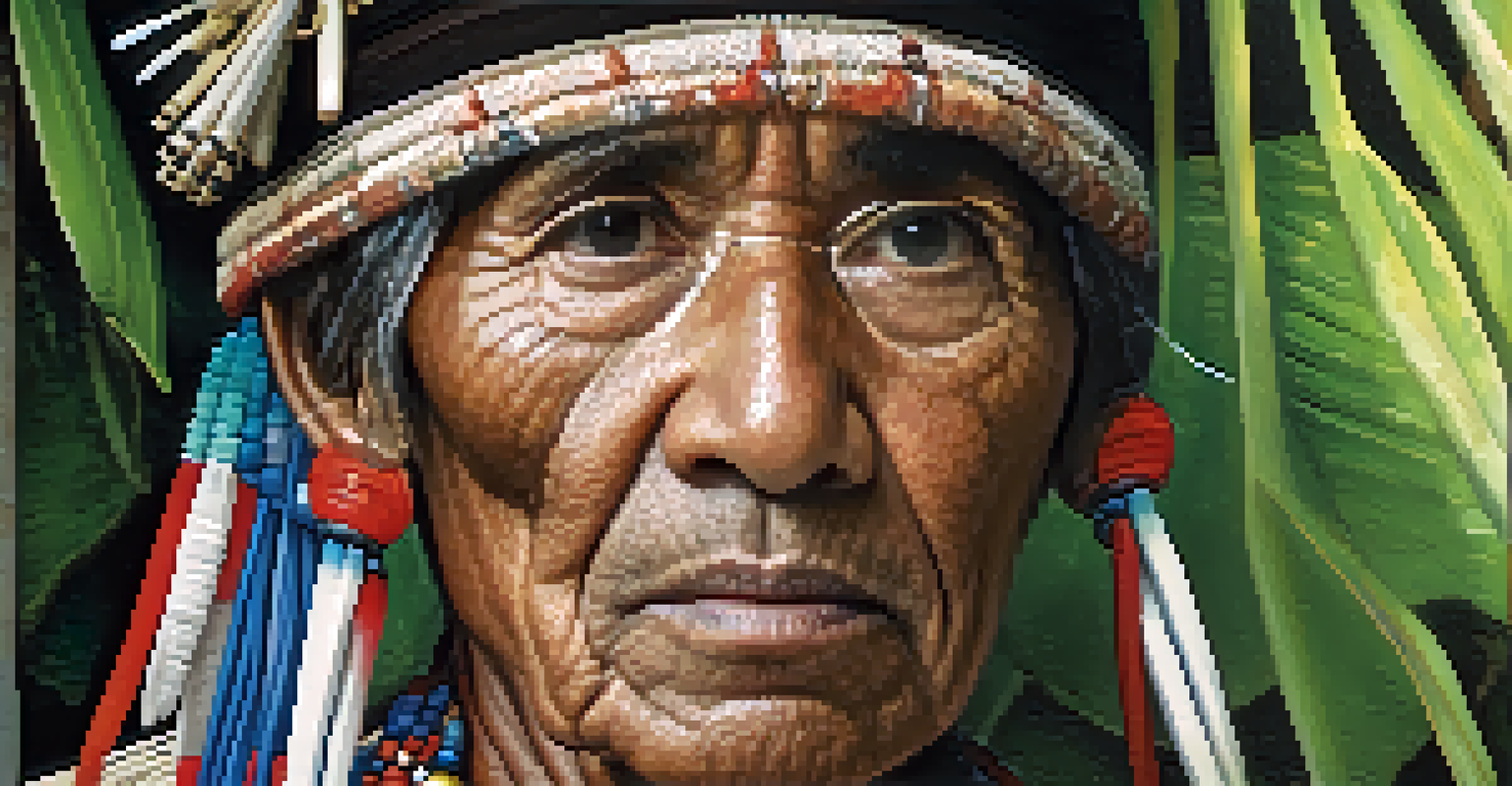The Role of Indigenous Peoples in Peru's Wildlife Protection

Understanding Indigenous Peoples' Connection to Nature
Indigenous peoples in Peru have a profound connection to their natural surroundings. This bond is not just cultural but also spiritual, as they view themselves as stewards of the land. Their traditional practices and knowledge have been passed down through generations, fostering a deep respect for biodiversity.
The land is not an inheritance from our ancestors, but a loan from our children.
For instance, many Indigenous communities engage in sustainable harvesting techniques that ensure the balance of local ecosystems. They understand the importance of each species, not just for their survival but for the health of the environment as a whole. This wisdom is rooted in centuries of observing and interacting with nature.
By maintaining these practices, Indigenous peoples play a crucial role in wildlife conservation. They are often the first line of defense against ecological threats, leveraging their intimate knowledge of the land to protect wildlife from overexploitation and habitat destruction.
The Impact of Traditional Ecological Knowledge
Traditional Ecological Knowledge (TEK) refers to the insights Indigenous communities have gained from their interactions with the environment. This knowledge includes understanding animal behaviors, seasonal changes, and plant uses, which are essential for effective wildlife management. TEK is a valuable resource that complements scientific approaches to conservation.

For example, some Indigenous groups in Peru use controlled burns to manage land, promoting new growth and maintaining habitat for various species. This method, honed over generations, showcases how Indigenous practices can enhance biodiversity and ecological resilience.
Indigenous Knowledge Enhances Conservation
Traditional Ecological Knowledge (TEK) from Indigenous communities plays a vital role in wildlife management and complements scientific conservation efforts.
Integrating TEK with modern conservation strategies creates a more holistic approach to wildlife protection. By valuing Indigenous knowledge, conservationists can develop more effective, culturally sensitive strategies that benefit both wildlife and local communities.
Challenges Faced by Indigenous Communities
Despite their crucial role, Indigenous peoples often face significant challenges in wildlife protection efforts. Land rights issues, economic pressures, and climate change threaten their traditional ways of life. These challenges can undermine their ability to manage and protect their natural resources effectively.
Indigenous peoples are the best protectors of the environment. Their traditional ecological knowledge is a vital part of the solution to our environmental crises.
Additionally, encroachment from agriculture and mining industries disrupts ecosystems and displaces Indigenous communities. This not only affects their livelihoods but also diminishes their role as guardians of biodiversity. The loss of land equates to a loss of traditional knowledge and practices essential for wildlife protection.
Addressing these challenges requires collaboration between Indigenous communities, governments, and conservation organizations. Empowering Indigenous voices in decision-making processes is vital for sustainable wildlife management and ensuring their rights are respected.
Successful Conservation Initiatives Led by Indigenous Peoples
Many Indigenous-led initiatives have successfully protected wildlife and their habitats in Peru. For example, the Ashaninka community has created conservation areas that safeguard local ecosystems while allowing sustainable resource use. Their efforts demonstrate the effectiveness of community-led initiatives in addressing environmental challenges.
Similarly, the Kichwa people have implemented biodiversity monitoring programs that track wildlife populations and health. By harnessing their traditional knowledge, they contribute invaluable data to conservation efforts, showcasing how Indigenous practices can align with scientific research.
Challenges Threaten Indigenous Rights
Indigenous peoples face significant challenges, including land rights issues and environmental threats, which hinder their ability to protect biodiversity.
These successful initiatives highlight the importance of Indigenous leadership in conservation. When Indigenous peoples are empowered to manage their lands, they can enact meaningful change that benefits both wildlife and the broader community.
Legal Recognition and Indigenous Rights
Legal recognition of Indigenous rights is crucial for effective wildlife protection in Peru. International frameworks, such as the United Nations Declaration on the Rights of Indigenous Peoples (UNDRIP), advocate for the rights of Indigenous communities to manage their lands and resources. However, implementation at the national level remains inconsistent.
In Peru, some progress has been made in acknowledging Indigenous land rights, but challenges persist. Many communities still struggle to gain formal title to their ancestral lands, leaving them vulnerable to exploitation and environmental degradation. Without secure land rights, their ability to protect wildlife is significantly hindered.
Strengthening legal frameworks to support Indigenous land rights is essential for conservation efforts. When Indigenous peoples have clear ownership and control over their territories, they can effectively steward their resources and contribute to biodiversity protection.
Collaborative Conservation: A Path Forward
Collaboration between Indigenous communities, governments, and conservation organizations is essential for successful wildlife protection in Peru. By working together, stakeholders can create more effective strategies that respect Indigenous rights and incorporate traditional knowledge. This collaborative approach fosters mutual understanding and shared goals.
For instance, co-management agreements allow Indigenous communities to play an active role in conservation efforts alongside government agencies. These partnerships can lead to more sustainable practices that benefit both wildlife and local economies, ensuring a win-win situation.
Collaboration is Key for Wildlife Protection
Effective wildlife conservation in Peru requires collaboration between Indigenous communities, governments, and conservation organizations to incorporate traditional knowledge and respect Indigenous rights.
Ultimately, recognizing the importance of Indigenous peoples in wildlife protection is crucial for preserving Peru's rich biodiversity. By valuing their contributions and fostering collaboration, we can create a more sustainable future for both wildlife and Indigenous communities.
The Future of Wildlife Protection in Peru
The future of wildlife protection in Peru hinges on the empowerment of Indigenous communities. As the stewards of their land, their insights and practices are invaluable for conservation efforts. By prioritizing their rights and traditional knowledge, we can enhance biodiversity and ecological health.
Moreover, the effects of climate change present new challenges for both wildlife and Indigenous peoples. Adapting conservation strategies to incorporate Indigenous perspectives will be crucial in addressing these issues and ensuring the resilience of ecosystems.

In conclusion, the role of Indigenous peoples in wildlife protection is indispensable. Their deep-rooted connection to nature and commitment to sustainable practices make them vital partners in the fight against biodiversity loss, paving the way for a harmonious relationship between humanity and the natural world.